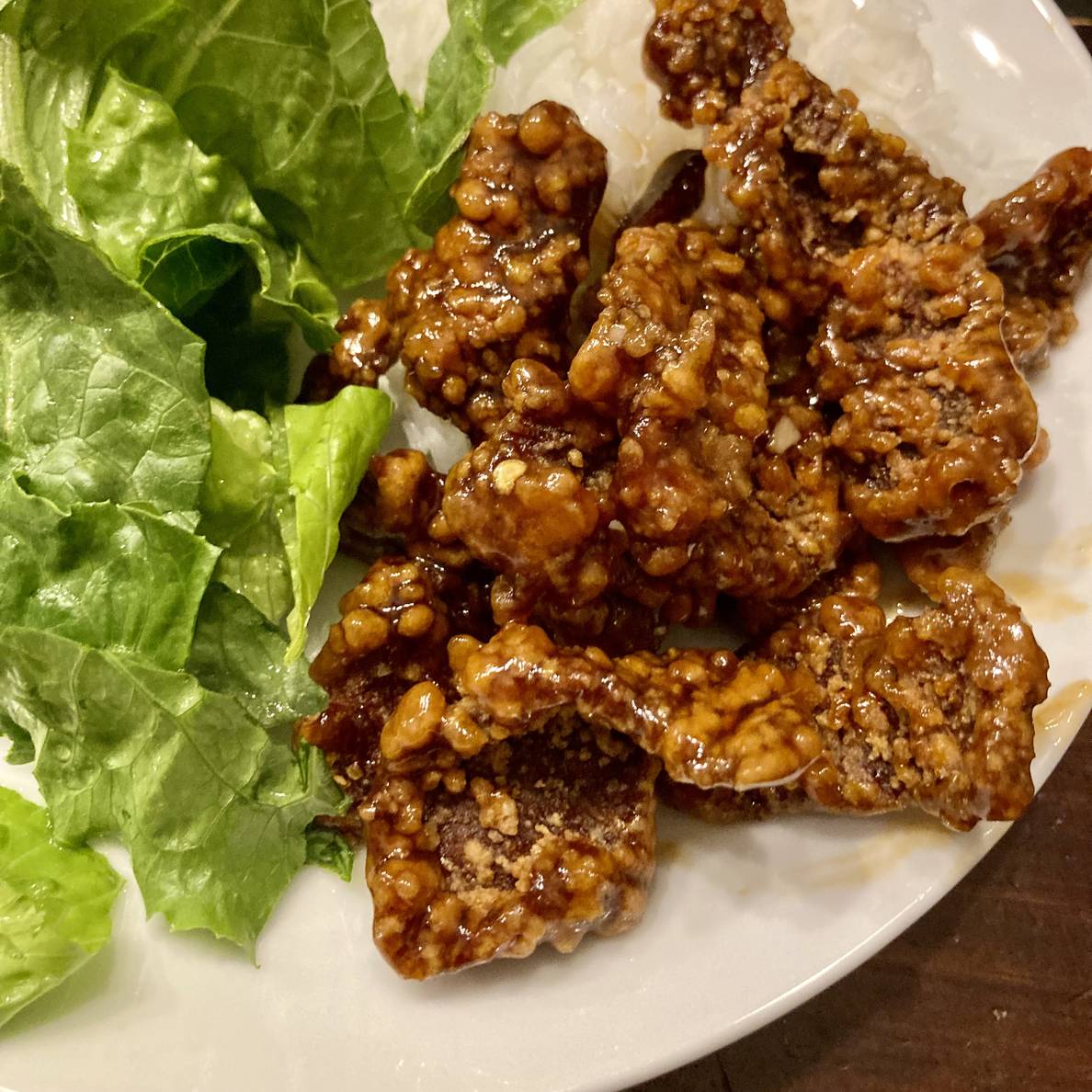Two weeks ago I made the Orange Peel Beef, By Way of Sichuan and Old New York recipe in J. Kenji Lopez-Alt’s The Wok.
This is a beef dish with a frying technique like General Tso’s (and California-style orange chicken and sesame chicken) but with beef instead of chicken.
Kenji recommends “the tighter grain of tenderloin, bottom round, or top sirloin” in the introduction but also includes flatiron, flap meat, skirt steak, and tri-tip as options in the ingredients. Flatiron was available at a good price when I shopped, so I opted for that. This cut has a seam of connective tissue cutting through the middle. I cut the meat off of this seam resulting in two pieces, and then sliced each of those into 1/4-inch slices to get the 1x2x1/4-inch slices for the recipe.
The marinade is the same as the chicken recipes: egg white, soy sauce, Shaoxing wine, vodka, baking soda, and cornstarch. And the dry coating is the same all-purpose flour, cornstarch, baking powder, and salt. The recipe also does the same technique of whisking some of the marinade into the dry coating. After whisking, I used the finger-crumbling technique from Springfield-style cashew chicken to help get smaller crumbs.
For the sauce, Sichuan peppercorns are fried in oil to infuse, and then the peppercorns are discarded. Garlic and ginger are added to the oil and cooked until soft. Small hot dried chiles, star anise, and cinnamon are then added and cooked until fragrant. I used chiles de arbol and omitted the star anise as we simply don’t care for that flavor.
Sugar, white vinegar, roasted sesame oil, chen pi, and chicken stock are added, and all of that is simmered for about 10 minutes. Chen pi is dried mandarin peel. I was able to find it at First Oriental Market.
The recipe had some confusion in the note about substituting fresh mandarin, tangerine, or satsuma peel. It says, “If using fresh peel, omit the soaking process in step 3. In step 5, add the fresh peels along with 1 cup of water in place of the chen pi and their soaking water. The directions say nothing about soaking the chen pi and adding it later with the soaking water. It just directs to add with the chicken stock in step 5. I’m guessing the 10 minutes of simmering took care of whatever the soaking accomplished, and that reference is from an earlier version of the recipe. The final sauce was minimal, however, so perhaps an additional cup of liquid could have helped.
After the 10 minutes of simmering, a soy sauce/corn starch mixture is added and the sauce is cooked until thickened. Finally, scallions are added.
The beef is fried similar to General Tso, and, once again, I opted for the optional double-fry for “extra-crispy results.” And, as I have learned, I need to do the fry in two batches in my wok.
After frying the beef is tossed with the sauce.
It was tasty, but could have been tastier. More sauce could have helped, but also the crunchy fried thinly sliced beef was dominantly crunch. Any presence of beef was completely lost in the crunchy coating. Kenji notes in the introduction that the Sichuan original is dry-fried instead of coated, and this recipe can also be made with that technique. I could be interested in trying it that way.

I am cooking my way through J. Kenji Lopez-Alt’s The Wok cookbook. Read more about it.
